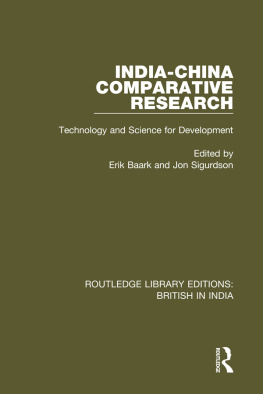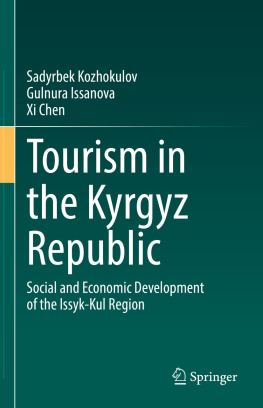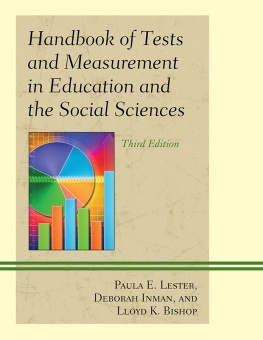COMPARATIVE ANOMIE RESEARCH
Comparative Anomie Research
Hidden barriers - hidden potential for social development
Edited by
PETER ATTESLANDER
BETTINA GRANSOW
JOHN WESTERN
Swiss Academy for Development
First published 1999 by Ashgate Publishing
Reissued 2019 by Routledge
2 Park Square, Milton Park, Abingdon, Oxon, OX14 4RN
52 Vanderbilt Avenue, New York, NY 10017
Routledge is an imprint of the Taylor & Francis Group, an informa business
Swiss Academy for Development 1999
All rights reserved. No part of this book may be reprinted or reproduced or utilised in any form or by any electronic, mechanical, or other means, now known or hereafter invented, including photocopying and recording, or in any information storage or retrieval system, without permission in writing from the publishers.
Notice:
Product or corporate names may be trademarks or registered trademarks, and are used only for identification and explanation without intent to infringe.
Publishers Note
The publisher has gone to great lengths to ensure the quality of this reprint but points out that some imperfections in the original copies may be apparent.
Disclaimer
The publisher has made every effort to trace copyright holders and welcomes correspondence from those they have been unable to contact.
A Library of Congress record exists under LC control number:
ISBN 13: 978-1-138-71815-9 (hbk)
ISBN 13: 978-1-315-19604-6 (ebk)
Contents
Robert K. Merton
Peter Atteslander
Bettina Gransow and John Western
Hanlin Li, Peter Atteslander, Judith Tanur and Qi Wang
Jelio Vladimirov, Todor Todorov, Ivan Katzarski and Momtchil Badjakov
John Western and Andrea Lanyon
Jean-Pierre Gern, Etienne Maillefer and Olivier Tschannen
Heinz Holley, Ken Jubber and Klaus Zapotoczky
Bettina Gransow, Andrea Lanyon, Judith Tanur and John Western
Bettina Gransow and John Western
Josef Schmid
Johan Galtung
Peter Atteslander, Bettina Gransow and John Western
This book is unlike many others: it is the result of significant efforts by a large number of persons in different parts of the world. The attempt to empirically test the effectiveness of social scientific tools and instruments, in different cultures was both a high risk project and a scientific challenge for all who participated.
The Board members of the Swiss Academy for Development, namely Fridolin Kissling, Chairman of the Foundation Board and Peter Graber, Controller, often had sleepless nights worrying about the financial commitments entered into which resulted from an expanding field work programme. Without the interest, encouragement and commitment of Ambassador Walter Fust, Director of the Swiss Development Cooperation, Swiss Foreign Ministry, who helped to finance exactly 67 per cent of the actual anomie research through the period 19941997, the project could not have proceeded. He insisted from the beginning, and continues to do so, that the search for factors leading to destabilisation of societies has to be undertaken in a way that directly contributes to the activities of those persons responsible for formulating development policies and those charged with the responsibility of implementing projects. We have to thank especially Daniel Maselli who joined the Swiss Development Cooperation towards the end of our project and is now helping us to implement our findings.
We have to mention the contributions from a group of industrialists. We have also to thank the Federal Office for Education and Science which has helped us for three years to create research capacities in the third and fourth world.
We are happy to witness a growing international interest in our work. For two years we have been able to carry out policy seminars together with the Service de Coopration of the Luxembourg Foreign Ministry. The direct questions asked of our research by administrators of development projects and of NGO leaders dealing with development, made us realise how many issues needed to be addressed and how modest in fact the contribution of social scientists to development efforts has been to date. Nevertheless we are proud of having been appointed as official partner in the elaboration of Luxembourgs development policy.
Our gratitude must also be extended to those members of the Scientific Board who were not actively involved in field research but who helped us immensely by providing constant inputs of ideas and criticism, especially regarding our concepts. Among many we have especially to mention Jamilah Ariffin. Apart from being a renowned social scientist and researcher, J. Ariffin welcomed us also in her role as First Lady of the State Government of Johor: At the invitation of her husband, the Honourable Dato Abdul Ghani Othman, Chief Minister, the whole research group travelled to the City and State of Johor, Malaysia during early 1998 to discuss at length and in depth the present state of our anomie research work as it is reflected in this book. The Chief Minister spent considerable time with our group of scientists.
In addition, we have to thank Hellmut Lckenhoff, a scientist and former controller of a large German company, who attempted on many occasions to apply our findings within a systems analysis framework leading to simulation of societal developmentswe are still learning in this area and are yet to achieve our original goal. Michael Cernea, a social scientist and Senior Advisor to the World Bank, Washington, has helped us to place our work within a broader social science framework. Gertrud Lenzer, Professor of Sociology and Childrens Studies at the City University of New York, insisted that we should stress on the importance of children in the study of social change.
Needless to say women all over the world facing anomic social structures not only share most of the burden but are also very often dealing much more efficiently with everyday solutions than are mena research project of its own. Two members of the Foundation Board of the Swiss Academy for Development assisted us with critical questions and guidance: Rudolf Zihlmann, lawyer and writer, Lucerne, and Rosmarie Waldner, Science Editor of Tages-Anzeiger, Zrich.
Most of the co-ordination and editorial work for this book had to be done at the Swiss Institute for Development in Biel. The citys Mayor Hans Stckli and the town council provided us with a beautiful old house of the late 16th century where we deal with respect the challenges of the next millennium.
Gnther Gebhardt accompanied us as the Executive Secretary during one year and a half and has been a tremendous help in finalising the manuscript for the book. Jolanda Crettaz, Marco Dolfini and Daniel von Burg were the members of our production team; relentlessly co-operating, both with ideas, corrections and especially technical expertise and creativity. Elizabeth C. Needham, New York, a collaborator of Prof. Robert K. Merton, finalised the Index in a highly professional manner. In these hectic final months we were all very happy to have our secretary Liliane Gasser as a most friendly and efficient support for the whole SID team.
It was a pleasure to work with our publisher Ashgate Publishing Limited in London. We would especially like to mention Ms. Kate Trew, Ms. Anne Keirby, and Ms. Ann Newell.










